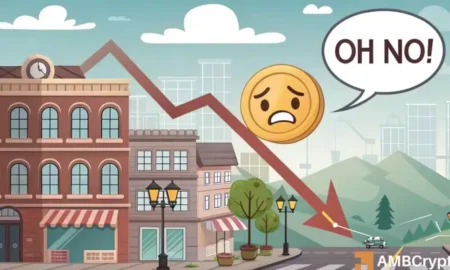Understanding the Recent Challenges Faced by HyperLiquid
On July 29, HyperLiquid (HYPE) users experienced significant disruptions due to an unexpected surge in API traffic, leading to confusion and financial losses. This technical glitch caused delays in order updates, leaving many users unaware of their actual trading positions, which ultimately resulted in real monetary impacts. Acknowledging the gravity of the situation, HyperLiquid implemented a refund policy aimed at compensating affected traders for their losses and inflated funding rates during the chaotic 14:10-14:47 UTC window.
The Technical Glitch and Its Consequences
The spike in API traffic overwhelmed HyperLiquid’s servers, resulting in delayed order updates and misleading error messages. While transactions were successfully submitted and confirmed on-chain, users were misled into thinking that their trades had failed. This disconnect between what users believed was happening and the actual state of their transactions led to unintended financial consequences. Many traders inadvertently entered positions they could not track, leading to confusion during an already volatile trading environment.
HyperLiquid’s Response
In the aftermath of the disruption, HyperLiquid took steps to refund traders who were specifically impacted by the surge. The platform aimed to recreate worst-case exit scenarios to ensure that all affected users received fair compensation. This proactive approach to handling the situation was seen by some as a commendable effort, illustrating a commitment to customer service and responsibility. However, the lack of a legal obligation to refund users sparked a debate within the crypto community about what constitutes acceptable corporate behavior in the event of a technical failure.
Community Reactions: A Mixed Bag
The reactions to HyperLiquid’s refund policy were divided. Many traders celebrated the platform’s decision, deeming it "world class" and highlighting how they effectively managed a situation that could have significantly damaged user trust. However, critics pointed out that issuing refunds after a technical failure is a basic expectation rather than an extraordinary gesture. One user noted, “The fact that the industry thinks this is incredible just shows how disgusting crypto has become.” Regardless of differing opinions, all agreed on the pressing need for improved infrastructure to prevent such occurrences in the future.
Market Dynamics: HYPE Token Recovery
Despite the turmoil surrounding the recent outages, HYPE token exhibited signs of mild recovery after the incident. As of the latest updates, HYPE was trading around $39.39, reflecting a daily gain of 1.6%. However, technical indicators suggested that traders should remain cautious. The Relative Strength Index (RSI) remained below the neutral 50 mark at 43.32, indicating ongoing bearish momentum. Additionally, the Chaikin Money Flow (CMF) was negative at -0.20, suggesting that capital outflows continued to plague the market. Price candles also hovered below the Bollinger Band midline, implying limited bullish strength. While the token showed a bounce from recent lows, the lack of volume and conviction signaled that this could merely be a temporary pause rather than a confirmed reversal.
The Path Forward
The events surrounding HyperLiquid’s recent technical difficulties serve as a cautionary tale for the broader crypto landscape. While the initiative to refund affected users is a positive step, it underscores the critical need for exchanges to build robust systems capable of supporting surges in user activity without compromising service quality. As the market stabilizes, it will be essential for platforms like HyperLiquid to invest in strengthened infrastructure and effective communication strategies that keep users adequately informed. Only by prioritizing these areas can they hope to regain user trust and establish a more reliable trading environment.
In conclusion, while HyperLiquid’s response to the technical glitch shows a commitment to customer service, the overall experience highlights vulnerabilities in the crypto ecosystem that need to be addressed. The community’s mixed reactions reflect a broader desire for transparency and accountability within the industry. As traders look ahead, focusing on platforms with robust infrastructure and effective communication will be paramount in ensuring a secure trading experience.
















